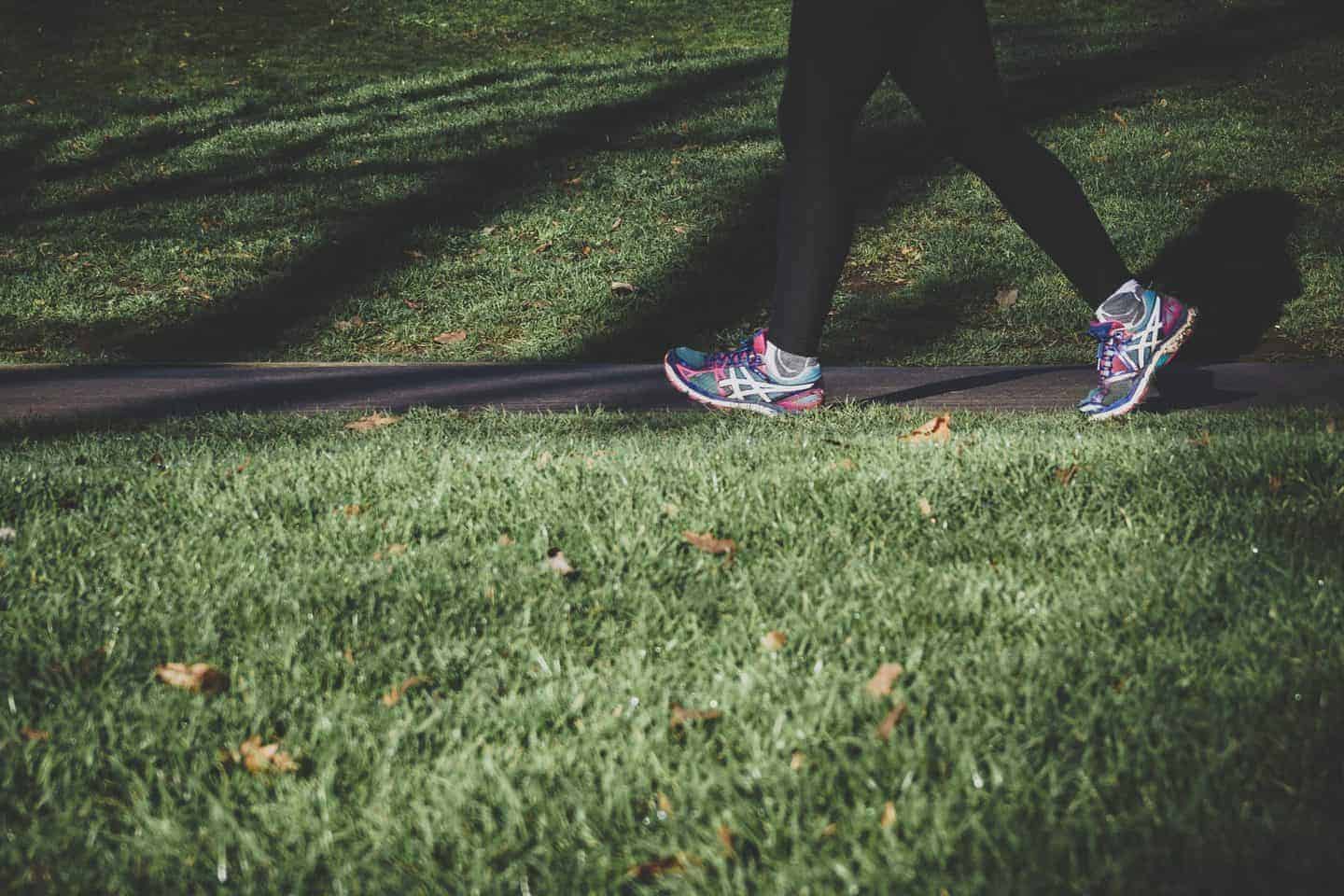Geschatte leestijd: 4 minutenResearchers at Brigham Young University have shown that maintaining your natural running rhythm is the most efficient. When it comes to energy consumption, as a runner, you shouldn’t be looking for an ‘optimal’ stride size.

“The ideal running technique”
A quick Google search shows that there’s a lot written about running technique such as cadence, rhythm, or stride rate. There’s supposed to be an ideal rhythm, or a number of steps per minute, that would cost the least energy. An ideal stride size related to your height or leg length. However, researchers at Brigham Young University suggest based on their research that maintaining your natural stride is more effective than focusing on an “ideal stride” [1]. This applies to both experienced and inexperienced runners.
Two professors from Brigham Young University measured the energy consumption (oxygen consumption) of 33 runners, 19 experienced (at least 32 km per week running) and 14 inexperienced runners (never run 8 km in a week). They had the runners run for 20 minutes with 5 different stride sizes. The runners ran in their natural way, but also with a stride that was 8 and 16 percent smaller and larger than their natural stride. To help them, a metronome was used to indicate the rhythm.
The results showed that both experienced and inexperienced runners were most efficient when they maintained their natural stride. According to the researchers, athletes and coaches should not focus on finding the optimal stride size or an ideal running rhythm.
Period of adaptation needed?
I have some questions about this. In this study, a comparison was made between the natural technique and a deviating technique that the body is not accustomed to. Isn’t it logical then that the body doesn’t immediately know how to deal efficiently with it?
In almost every form of sport, techniques are taught that don’t feel natural immediately. The idea behind it is that through repetition, it will start to feel natural and ultimately provide better results than your current technique. Otherwise, I would still be shooting like a basketball player on the first day of playing basketball. You can think of hundreds of examples of learned techniques in sports.
For example, it’s not clear to me to what extent experienced runners have taught themselves the current stride. It wouldn’t be strange if you read all the theories about optimal running rhythms. It would be strange if, as an experienced runner, you’ve never thought about it. Their current stride may be larger than when they started years ago but has since become accustomed. If they now have to take a step that is 8 or 16 percent smaller for the study, it could very well be comparable to their original stride size. However, it will now feel uncomfortable and may cost more energy (in part) because of that.
Previous research has also shown that runners naturally choose a rhythm that mathematically is very close to their ideal running rhythm. This is a principle called ‘self-optimization’ [2,3]. Previous studies also showed that runners on average take steps that are 3% larger (and therefore have a lower rhythm) than is mathematically optimal [4 to 7]. In the Brigham Young study, the steps were adjusted by 8 and 16 percent. The direct effect of that was negative. However, other studies have also looked at adjustments of 3% and found no direct effect [8,9], while 6% was also found to have a negative effect [5].
This would suggest that the average runner could improve their stride (mathematically) with an adjustment of 3% without it having a negative effect in the short term.
Running professors
But the researchers responsible for the publication in the International Journal of Exercise Science are no strangers to running. Jared Ward finished 6th in the marathon at the 2017 Olympic Games. Iain Hunter is a consultant for the USA Track and Field team, for which he has been conducting biomechanical analyses for 14 years.
So you would think that they have thought carefully about the logic of the research setup. In my opinion, the research proves that it is pointless to drastically change your natural stride for immediate results. In my opinion, this does not exclude the possibility that an adjusted running rhythm and different stride size may not be beneficial in the long run. It’s also important to realize that smaller adjustments are often sufficient and may not have a negative effect in the short term.
References
- Hunter, Iain; Tracy, James B.; and Ward, Jared. Self-optimization of Stride Length Among Experienced and Inexperienced Runners. International Journal of Exercise Science, Vol. 10 Iss. 3, Pages 446 – 453
- Moore IS, Jones AM, Dixon SJ. Mechanisms for improved running economy in beginner runners. Med Sci Sports Exerc. 2012;44:1756–1763. doi: 10.1249/MSS.0b013e318255a727.
- Williams KR, Cavanagh PR. Relationship between distance running mechanics, running economy, and performance. J Appl Physiol. 1987;63:1236–1245.
- Cavanagh PR, Williams KR. The effect of stride length variation on oxygen uptake during distance running. Med Sci Sports Exerc. 1982;14:30–35. doi: 10.1249/00005768-198201000-00006.
- de Ruiter CJ, Verdijk PW, Werker W, et al. Stride frequency in relation to oxygen consumption in experienced and novice runners. Eur J Sport Sci. 2013;14:251–258. doi: 10.1080/17461391.2013.783627.[PubMed] [Cross Ref]
- Hunter I, Smith GA. Preferred and optimal stride frequency, stiffness and economy: changes with fatigue during a 1-h high-intensity run. Eur J Appl Physiol. 2007;100:653–661. doi: 10.1007/s00421-007-0456-1.
- Connick MJ, Li FX. Changes in timing of muscle contractions and running economy with altered stride pattern during running. Gait Posture. 2014;39:634–637. doi: 10.1016/j.gaitpost.2013.07.112.
- Moore IS, Jones AM, Dixon SJ. The pursuit of improved running performance: can changes in cushioning and somatosensory feedback influence running economy and injury risk? Footwear Sci. 2014;6:1–11. doi: 10.1080/19424280.2013.873487.
- Craighead DH, Lehecka N, King DL. A novel running mechanic’s class changes kinematics but not running economy. J Strength Cond Res. 2014;28:3137–3145. doi: 10.1519/JSC.0000000000000500.

